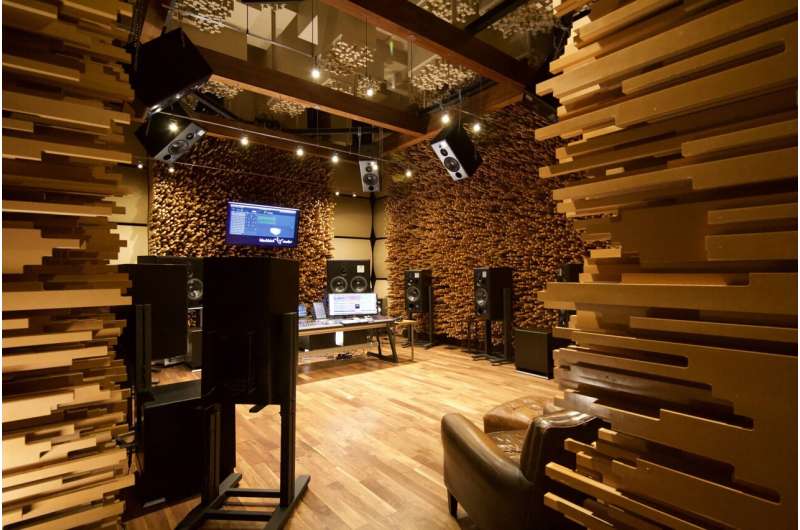
Blackbird Studio in Nashville has an impressive client list that includes Carrie Underwood, Dolly Parton, Garth Brooks, and Johnny Cash, among many others. Part of its success may be because owners John and Martina McBride have focused on creating unique acoustic environments.
At the 183rd Meeting of the Acoustical Society of America, Dr. Peter D’Antonio of RPG Acoustical Systems and George Massenburg of McGill University will describe “The evolution of Blackbird Studio C,” a space designed to provide an accurate and immersive mixing and production environment. The presentation will take place Dec. 6, following a presentation by D’Antonio on a new Non-cuboid Iterative Room Optimizer (NIRO). Both talks are part of the conference running Dec. 5-9 at the Grand Hyatt Nashville Hotel.
Massenburg conceived the design and consulted with D’Antonio to collaborate and design the control room. After sound mixing in all known types of professional and experimental spaces, Massenburg wanted to create a unique, ambient anechoic space. Such a studio allows ambient sound to decay equally across different frequencies and is free from interfering reflections, making it sound like an indoor forest.
To achieve this and control all sound reflections in the room, the team covered the walls and ceiling with primitive root diffusers. Compared to a reflective surface, which bounces sound energy back in one direction, this technology causes sound energy to diffuse and radiate in many directions.
Musicians in the studio can hear and balance themselves without headphones or excessive amplification. Mixing engineers adapt quickly to the room and its ambience.
“In measuring the room, we noticed that the direct sound was followed immediately by reflections 30 decibels below the direct sound, which is what you find in an anechoic (echo-free) chamber,” said D’Antonio. “Yet the room did not exhibit the uncomfortable, ‘acoustically dead’ characteristics of an anechoic chamber. Quite the opposite; the room felt comfortably ambient, and hence we created the ambient-anechoic portmanteau: ambichoic.”
In the presentation, Massenburg and D’Antonio will also discuss user perceptions of the ambichoic studio and improvements to the room’s technology over time.
acousticalsociety.org/asa-meetings/
Citation:
Cultivating a music studio to sound like an indoor forest (2022, December 6)
retrieved 6 December 2022
from https://techxplore.com/news/2022-12-cultivating-music-studio-indoor-forest.html
This document is subject to copyright. Apart from any fair dealing for the purpose of private study or research, no
part may be reproduced without the written permission. The content is provided for information purposes only.
Stay connected with us on social media platform for instant update click here to join our Twitter, & Facebook
We are now on Telegram. Click here to join our channel (@TechiUpdate) and stay updated with the latest Technology headlines.
For all the latest Technology News Click Here
For the latest news and updates, follow us on Google News.
